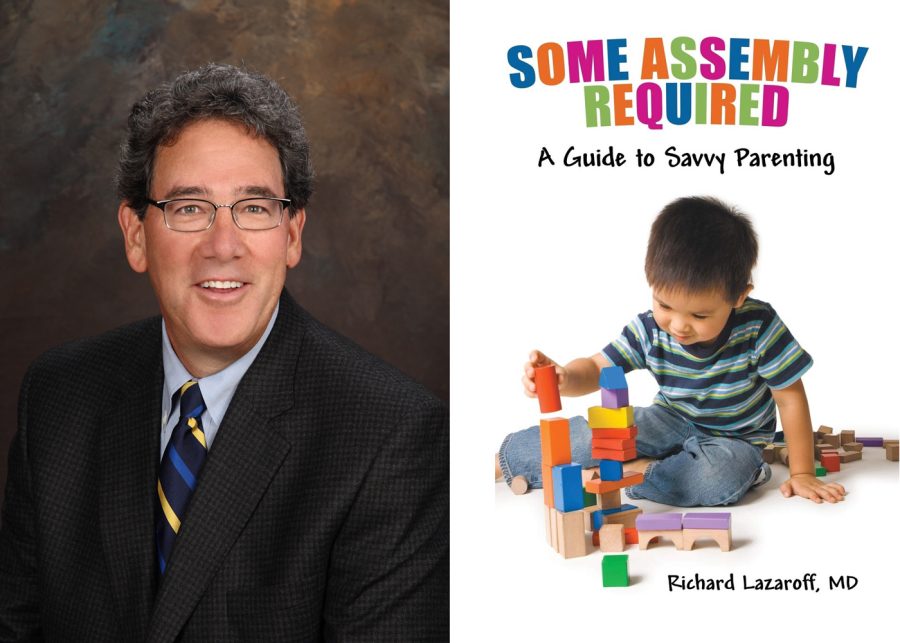Become a successful parent: Develop and project parental ‘presence’
Published March 9, 2022
Many of us have struggled with a toddler who seems to run the house, or as I prefer to say, “The inmates are running the asylum.” They have temper tantrums, defy parental requests, engage in aggressive behaviors, insist on sleeping with their parents and may be difficult to toilet train as well.
Some of these same children, however, attend daycare or pre-school where they are model children. How is this possible?
I usually remind parents that at daycare and pre-school, their caregivers do not love the child and may not even like them (just kidding). The daycare or preschool must have an environment that is consistent 100% of the time. This is very different from the home where children are loved and where excuses tend to be made for a child’s testing behaviors (such as they’re tired, just got over being sick or missed the attention of a parent who were out of town on business).
ADVERTISEMENT
Parents can come up with a lot of reasons to justify not being consistent about setting limits, but this is unfair to children. They function better in situations when they know their limits. It may seem that I view parents as the problem. Problem or not, it never helps to say that, and I would usually say to parents in the office that they are the solution in any event.
A classic manner in which a limit-setting problem came into the office masquerading as a medical problem related to sleep routines. Parents would make an appointment thinking their child must have an ear infection because the child wakes at night and is unable to go back to sleep on their own. After a normal exam and further history, it would become clear that the child never fell asleep on their own but stalled and threw tantrums until the parent laid down with them.
I remember one family that allowed their child to fall asleep on the living-room sofa each night while the family watched TV. When that child awoke at 3 a.m. each night, parents and child had to go back downstairs to the sofa, turn on the TV, wait for the child to fall back asleep again, and then carry him back to bed.
Intellectually, parents know they have reinforced what is now a troublesome habit, yet they will make excuses for the child rather than make the difficult, but necessary, decision to adhere to a consistent bedtime routine that does not require them to be in bed or with the child until they fall asleep.
ADVERTISEMENT
Usually before we would develop a plan together, I would ask parents if setting limits was a problem or weakness in general for them. If they answered that it was, I would tell them that we would approach this as a win-win opportunity to solve their sleep problem and build their confidence that they would be capable of setting limits going forward.
Raising children is complicated. Each child has their own temperament, and each parent has their own parenting style. It is my experience, however, that even the most difficult and willful children will respond when parental “presence” exists.
What is “presence?” It encompasses many things. It includes projecting authority and confidence, being a good role model who is sensitive and respectful, communicating consistent limits and providing choices when suitable, recognizing age-appropriate behaviors and giving your child positive re-enforcement for those behaviors while ignoring inconsequential misbehavior. It is a big job and often brings more success when a partner (spouse or significant other) is committed to the same approach.
I encourage parents to, once their child is in bed for the night, spend a few minutes together to share your successes and to problem-solve other situations that don’t go so well. Working constructively together means being careful not to criticize or judge each other when working to change a long ingrained difficult behavior.
Here are some additional practical points to consider when dealing with troublesome behaviors in your child:
1. Save the lectures for the lecture hall. Research has shown that in most situations verbal explanations and instructions do not effectively change a child’s behavior. If you want to be effective, praise positive behavior—catch them being good —and ignore most negative behavior as long as it is doesn’t injure them or others. Re-directing your child to an alternative activity can often be a good strategy to avoid a struggle.
2. Assess your family routines. Children respond best when their daily activities occur consistently. Adequate sleep is especially important, so respect naps and bedtimes.
3. Set a good example. Children learn from parents as role models. Our homes must provide warmth and respect for others. It might be a good time to take a deep breath before reacting or you might regret your behavior and the example you are setting.
4. Don’t be afraid to say NO if it is a matter of safety. Children need to be safe and must learn to live with others. If you are unable to set limits when they are toddlers, good luck when they are in their teens. (As is often said, little people, little problems; big people, bigger problems.)
5. Teach children how to express their feelings. Listen carefully to your child and help them find and use words when angry, frustrated or disappointed.
6. Give children two choices as often as possible. “Would you like a PBJ or grilled cheese sandwich for lunch?” “It is time for your bath [not negotiable, by the way]; you may choose to play a game with me before or after your bath. Which do you want to do?” If there is no choice in a matter, do not offer one.
7. Ignore unimportant misbehaviors. Any limit setting should be based on real safety issues or on the child’s developmental ability to comply with the expected behavior. For example, do not expect a toddler not to swing their legs at the dinner table.
8. Strive to be consistent. Children learn fastest and best to trust a parent setting limits when there are no surprises. If you say it, mean it.
Consider contacting your pediatrician if:
1. Your child’s behavior is a problem at home AND at daycare or pre-school.
2. Your child’s behavior is dangerous to themselves or others.
3. You find yourself increasingly frustrated, and especially if you think you are depressed or might hurt your child when frustrated.
4. You and your spouse do not agree on how to best proceed regarding a child’s behavior problem.
Each stage of childhood can be seen as an opportunity to find your game as a parent before the stakes get really high. Adolescents out of control can make very serious errors in judgment. Setting limits at those ages will be more difficult if that has not been your pattern of parenting.
Remember, children need consistent limits to thrive. As they develop the competence to safely make more decisions, that’s the time for you, as parents, to step back and watch.
Dr. Richard Lazaroff is a retired pediatrician who practiced in St. Louis County for nearly 40 years. He is the author of “Some Assembly Required, A Guide to Savvy Parenting” and the soon to be released “Illumination” a multigenerational novel of historical fiction following the struggles of a modern day Jewish woman in an interfaith marriage seeking personal meaning in her faith.
















